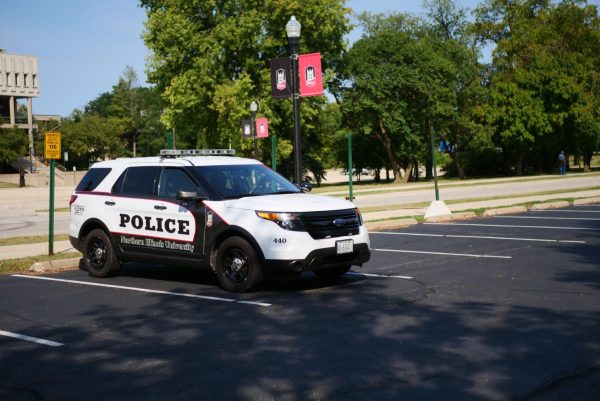Too tan, or not too tan
November 13, 2002
Who wouldn’t love clear skin, a stress-reliever and a confidence boost all rolled into one?
Tony Glaudel, owner of Ultra Tan, 1023 W. Hillcrest Drive, said people can get all this at a tanning salon.
However, tanning in a tanning bed can be risky.
Skin care specialist Barb Schindler said tanning beds can cause aging and may add to the risk of skin cancer.
Though they may add to the risk, Glaudel said there’s no proof that tanning beds cause skin cancer.
“There is not one known case of a tanning bed ever causing skin cancer,” Glaudel said. “The number one reason people get skin cancer is heredity.”
Skin cancer and tanning both are related to two types of UV rays, Schindler said. There are UVA rays and UVB rays. UVA rays cause aging, and UVB rays cause burning, she said. An accumulation of both is what causes skin cancer.
The sun emits both UVA and UVB rays, while tanning beds only emit UVA rays, Schindler said. Though it takes both types of rays to get skin cancer, tanning beds can add to the accumulation of the rays causing cancer.
Glaudel said there are benefits to tanning in a salon, as long as it’s done in moderation.
“It has been known to help acne, eczema [a skin disease], psoriasis and stress, as well as the most common one – it makes you look better,” Glaudel said.
He does not recommend tanning more than once every three or four days, though.
“Truthfully, I’d like to see people tan five to six times a month,” he said.
As skin tans, it thickens to protect itself from the sun, Glaudel said. Tanning too often can give skin a leathery look.
This is because UV rays break down the collagen in skin, making it lose elasticity and vibrancy, Schindler said.
Glaudel said tanning beds also may help treat Seasonal Affective Disorder (SAD), a form of depression that affects people during winter months.
Associate psychology professor Peter Gutierrez said SAD occurs because of insufficient exposure to sunlight. Treatments include exposure to a light box that simulates sunlight, he said.
Tanning beds radiate both light and UVA rays. Gutierrez said he understands the argument that tanning beds reduce the effects of SAD. However, he questions their effectiveness.
“In order for light therapy to work, it’s typically a couple of hours a day,” Gutierrez said.
However, whether or not it has any effect on SAD, Glaudel said many of his customers find tanning relaxing and therapeutic.
Molly Cooke, a junior athletic training major, said she does find tanning in a bed relaxing, although she would not go to a tanning salon on a regular basis.
“I didn’t really like laying in another bed that someone was sweating in,” Cooke said.
Maureen Williams, an employee at Super Tan of DeKalb, 122 E. Hillcrest Drive, said the staff members clean the tanning beds after each use.
For customers who still refuse to enter a tanning bed, there is new technology called a spray booth, Glaudel said. It evenly sprays bronzer all over the body and lasts anywhere from one to two weeks. Glaudel said he has one at a branch of Ultra Tan in Naperville.
He also said it’s a myth that tanning beds can cook one’s insides.
“Tanning beds are not microwaves,” Glaudel said.
Tanning beds use UV waves, which is a completely different type of ray than microwaves. UV rays cannot reach past the skin, so it is impossible for them to cook your insides.













